COMMENT OF THE DAY RUNNER-UP: IT’S NOT WHAT YOU HAVE, IT’S HOW IT’S ATTACHED  “As an engineer who regularly performs inspections of homes/businesses, I don’t think there’s an issue with stucco itself. If properly installed and maintained, it works fine. Maintenance is just as important as installation, however most home owners do a poor job of regular maintenance on their house and just blame the builder for any issues that appear 5 years down the road. A good practice is to inspect and re-caulk any seals on the exterior of your house every year, preferably before the spring rainy season.
However, I wouldn’t go with the impermeable barrier system in Houston, which assumes that no moisture will get behind the wall (so there are no weep holes at the bottom). I’d rather have a ‘breathable’ building envelope, because keeping moisture out is very difficult with the soil conditions and climate we have in the area.” [Chase, commenting on Comment of the Day: Why Is Houston Still Stuck on Stucco?] Illustration: Lulu
“As an engineer who regularly performs inspections of homes/businesses, I don’t think there’s an issue with stucco itself. If properly installed and maintained, it works fine. Maintenance is just as important as installation, however most home owners do a poor job of regular maintenance on their house and just blame the builder for any issues that appear 5 years down the road. A good practice is to inspect and re-caulk any seals on the exterior of your house every year, preferably before the spring rainy season.
However, I wouldn’t go with the impermeable barrier system in Houston, which assumes that no moisture will get behind the wall (so there are no weep holes at the bottom). I’d rather have a ‘breathable’ building envelope, because keeping moisture out is very difficult with the soil conditions and climate we have in the area.” [Chase, commenting on Comment of the Day: Why Is Houston Still Stuck on Stucco?] Illustration: Lulu
Construction Problems
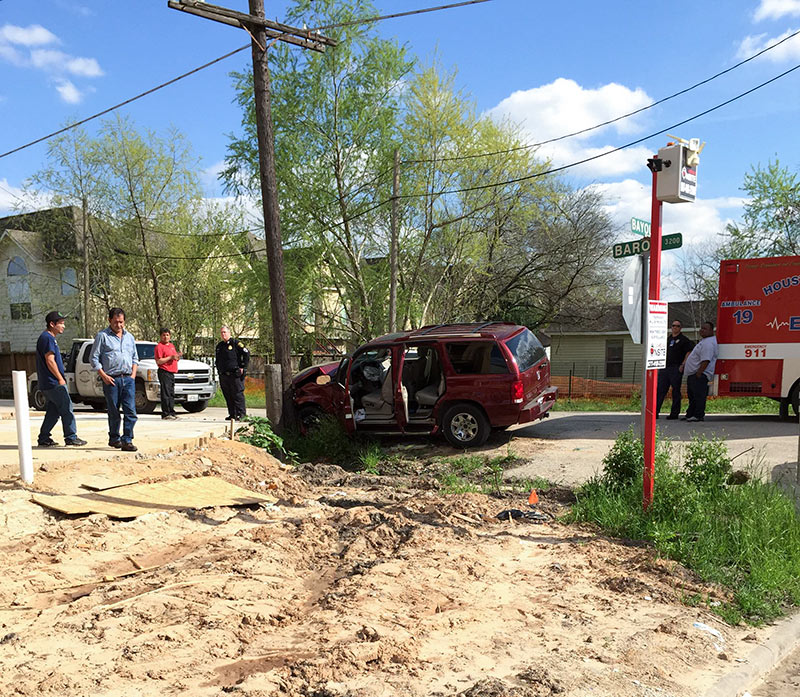
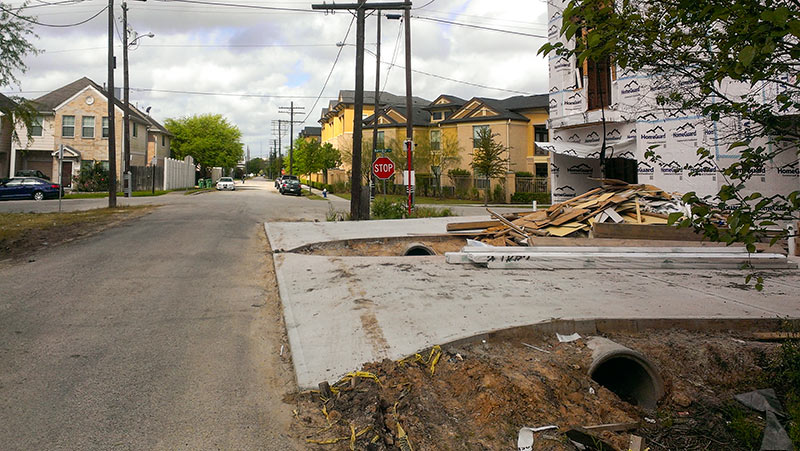 As a cautionary demonstration of the hazards of the kind of wacky old-roadway-meets-new-driveway construction found in front of a set of under-construction townhomes at the corner of Bayou and Baron streets in the Fifth Ward, the accident pictured here doesn’t quite hold up to extended scrutiny. Sure, it might be tough for a vehicle to stay on the asphalt when a stretch of roadway suddenly disappears and new concrete driveways stretch across it (as illustrated in the second photo above). But here the damaged Escalade appears to have crashed into a stationary hazard on the opposite side of the street.
As a cautionary demonstration of the hazards of the kind of wacky old-roadway-meets-new-driveway construction found in front of a set of under-construction townhomes at the corner of Bayou and Baron streets in the Fifth Ward, the accident pictured here doesn’t quite hold up to extended scrutiny. Sure, it might be tough for a vehicle to stay on the asphalt when a stretch of roadway suddenly disappears and new concrete driveways stretch across it (as illustrated in the second photo above). But here the damaged Escalade appears to have crashed into a stationary hazard on the opposite side of the street.

How did these townhomes under construction on the northeast corner of Bayou and Baron streets in the Fifth Ward come by their extra-long, tongue-like driveways? It’s not exactly clear, but the reader who sent these pix of the project and its rather prominent culvert-leaping flatwork thinks the answer might have something to do with a willingness to build well past the property line — or at least a lack of familiarity with where the property line actually is. The orange complex across the street, in the background of the photo above, is the Kennedy Place Apartments. Here’s a view of the townhomes from that side, looking east:
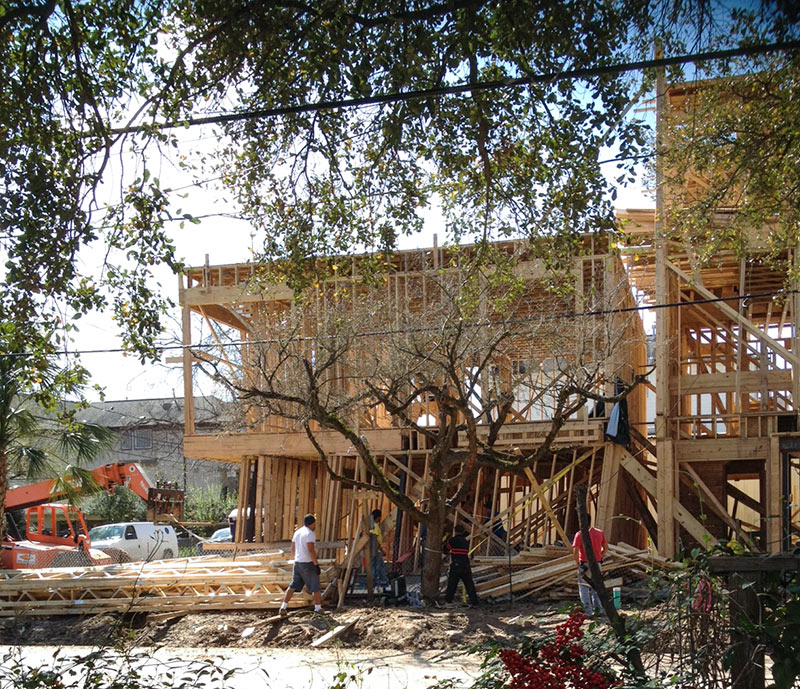
The upper floors of a townhome under construction at the corner of Knox and Schuler streets in Woodcrest were dismantled by workers over the weekend. Late last week, the mostly framed but still unsheathed building went askew after — according to a reader report — a forklift bonked it a little too hard. The damage appeared to be restricted to the bottom floor, with studs gaining a noticeable lean. The reader also reported seeing bulges appear in the back of the structure.
At the time of the accident, workers under contract to Suca’s Home Builders had framed 3 and a half stories of the 4-story townhome at 5902 Schuler St. By Saturday, the building was down to 2 stories, as pictured above. The following day, most of the second floor was removed as well, and the structure had been pulled straight by the forklift, according to the reader — as shown here:
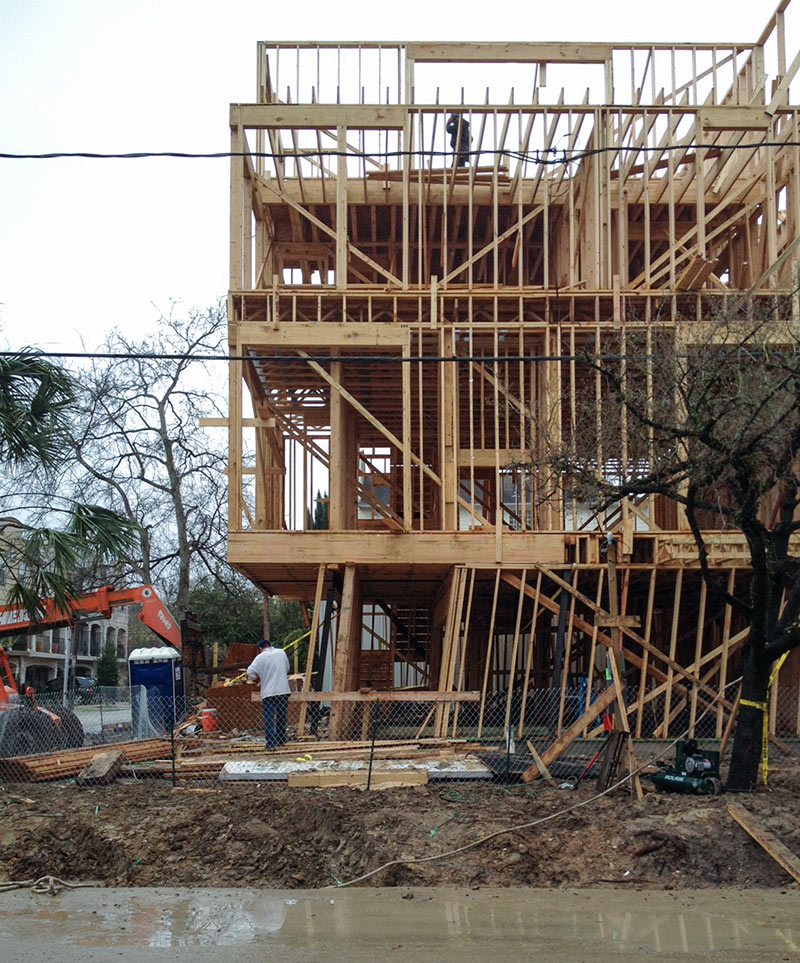
“Yesterday around 4:30 pm we heard a strange creak, and when we looked across the street, this is what we saw,” reports a Swamplot reader who was at the corner of Knox St. and Schuler in Woodcrest. The unintended lean in the first floor of the westernmost of 2 townhouses under construction on the site was apparently caused by a nudge from a high lift forklift. The 4-story structures at 1305 Knox and 5902 Schuler are under construction by Suca’s Home Builders.
“It’s hard to tell from the picture, but the back of the house has bulged out about a foot as well,” writes reader Matthew, who also reported seeing workers around, in, and on the building today, which he considers “in serious danger” of collapsing.
DEFORESTED KIRBY DR. WENDY’S BRINGS BACK A LITTLE GREENERY 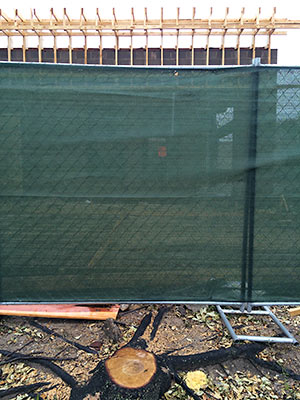 Passersby hoping to see for themselves precisely what hullabaloo was responsible for the larger-than-normal red tag placed by city officials on the door of the abruptly-paused-during-renovation Kirby Dr. Wendy’s now have an additional obstacle blocking satisfaction of their curiosity. The perimeter construction fencing on the jobsite at 5003 Kirby Dr. — which only went up just as workers were chopping down 6 oak trees on the surrounding public right-of-way late one night last week — has gained a new green-fabric wrapping. “I think it makes the construction look more attractive,” quips the reader who sent in the above photo of the stump-and-fence scene (with the red tag still barely visible through the greenage). That’s nice, the reader notes, since “apparently we are going to be looking at it for a long time.” [Previously on Swamplot] Photo: Swamplot inbox
Passersby hoping to see for themselves precisely what hullabaloo was responsible for the larger-than-normal red tag placed by city officials on the door of the abruptly-paused-during-renovation Kirby Dr. Wendy’s now have an additional obstacle blocking satisfaction of their curiosity. The perimeter construction fencing on the jobsite at 5003 Kirby Dr. — which only went up just as workers were chopping down 6 oak trees on the surrounding public right-of-way late one night last week — has gained a new green-fabric wrapping. “I think it makes the construction look more attractive,” quips the reader who sent in the above photo of the stump-and-fence scene (with the red tag still barely visible through the greenage). That’s nice, the reader notes, since “apparently we are going to be looking at it for a long time.” [Previously on Swamplot] Photo: Swamplot inbox
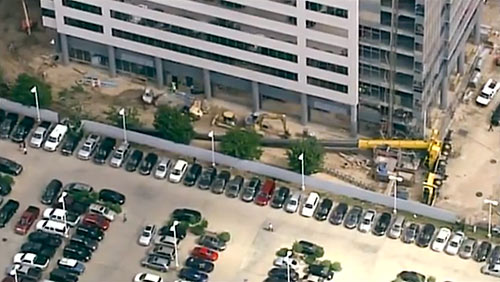
A truck-mounted crane at work on Mac Haik Realty’s Energy Tower IV on the north side of the Katy Fwy. just west of Kirkwood fell over earlier this afternoon, damaging scaffolding, a portion of the building’s curtain wall on a few lower floors, a fence separating the construction site from the adjacent Don McGill Toyota dealership at 11800 Katy Fwy., and a truck or 2 parked on the sales lot. No injuries have yet been reported. The 17-story, 450,000-sq.-ft. building began construction last August.
- Large crane falls over at building under construction in west Houston [Click2Houston]
- Previously on Swamplot:Â A New 17-Story Office Tower Just Like the Others in the Energy Corridor
Video still: Click2Houston
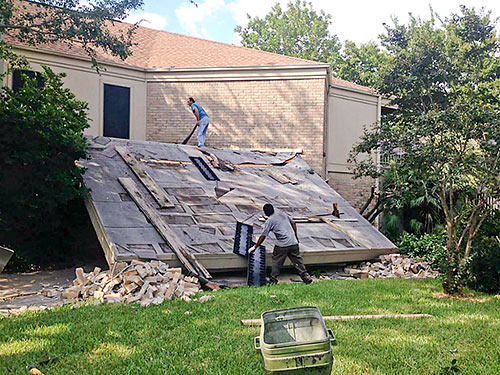
- 1326 E. Vistawood Dr. [HAR]
A LIFEBOAT FOR THE ROYALTON’S CORRODING CROWN? 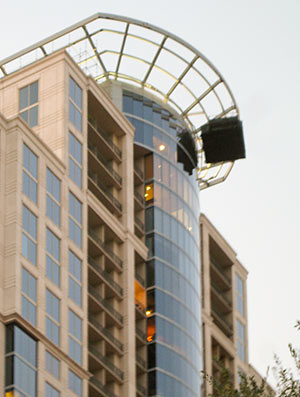 Judging from court filings, there appears to have been some sort of resolution to the lawsuit filed more than 2 years ago by the condominium association of the 253-unit Royalton at River Oaks highrise over the design of the steel grid at the top of the building at 3333 Allen Pkwy. The lawsuit claimed the structure was corroding and was designed in such away that made maintaining it or recoating it impossible — and sought damages from the building’s contractor, architect, and other parties. The condo association dropped its claims against many of those parties late last month. And a reader wonders if the attachment seen hanging below the structure in the recent photo at left, which “almost looks like a hot tub,” is part of some newly devised cleaning solution. [Prime Property] Photo:Â Swamplot inbox
Judging from court filings, there appears to have been some sort of resolution to the lawsuit filed more than 2 years ago by the condominium association of the 253-unit Royalton at River Oaks highrise over the design of the steel grid at the top of the building at 3333 Allen Pkwy. The lawsuit claimed the structure was corroding and was designed in such away that made maintaining it or recoating it impossible — and sought damages from the building’s contractor, architect, and other parties. The condo association dropped its claims against many of those parties late last month. And a reader wonders if the attachment seen hanging below the structure in the recent photo at left, which “almost looks like a hot tub,” is part of some newly devised cleaning solution. [Prime Property] Photo:Â Swamplot inbox
WHAT A FIRED IRONWORKER LEFT BEHIND AT KYLE FIELD 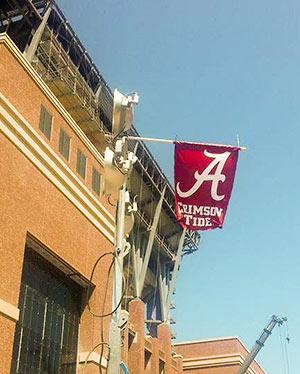 The ironworker fired from his job at the Kyle Field construction site after hoisting a University of Alabama flag from a crane at the Texas A&M football stadium has been subjected to an even greater indignity: After a photo of the stunt (at left) went viral, a crew of dead-serious investigators has been scouring the worker’s largely jokey Facebook page for possible additional anti-Aggie activity. And overnight, it appears, they hit paydirt. In context, Bobby Livingston’s offhand comment on his Facebook page from February 28th, under a self-portrait in an Alabama sweatshirt, that “This stadium will never be ready for this. Season,I’m putting iron in backwards and wrong holing everything!!”appears to be a joke among friends. It’s tougher to judge the circumstances surrounding a later Livingston post, however, because it appears now to have been deleted: According to College Station reporter Patrina Adger, he wrote on April 6, “If you ever attend a Texas A&M football game, don’t sit at the Northeast End Zone. It was raining today and I made two very ‘questionable’ welds.” The engineering firm in charge of inspections at Kyle Field, which is being expanded to seat more than a 100,000 fans, has issued a statement in response, assuring that all welds and connections have been tested, verified, and reviewed. [KBTX] Photo: Bobby Livingston
The ironworker fired from his job at the Kyle Field construction site after hoisting a University of Alabama flag from a crane at the Texas A&M football stadium has been subjected to an even greater indignity: After a photo of the stunt (at left) went viral, a crew of dead-serious investigators has been scouring the worker’s largely jokey Facebook page for possible additional anti-Aggie activity. And overnight, it appears, they hit paydirt. In context, Bobby Livingston’s offhand comment on his Facebook page from February 28th, under a self-portrait in an Alabama sweatshirt, that “This stadium will never be ready for this. Season,I’m putting iron in backwards and wrong holing everything!!”appears to be a joke among friends. It’s tougher to judge the circumstances surrounding a later Livingston post, however, because it appears now to have been deleted: According to College Station reporter Patrina Adger, he wrote on April 6, “If you ever attend a Texas A&M football game, don’t sit at the Northeast End Zone. It was raining today and I made two very ‘questionable’ welds.” The engineering firm in charge of inspections at Kyle Field, which is being expanded to seat more than a 100,000 fans, has issued a statement in response, assuring that all welds and connections have been tested, verified, and reviewed. [KBTX] Photo: Bobby Livingston
COMMENT OF THE DAY: YOU JUST DON’T KNOW 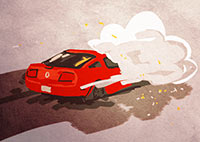 “The driver might have been rich. They might been entitled. They might have been drunk. They might not respect traffic laws at all or such sentiment may be situationally limited. They might have a small penis. They might have no patience. They might be narcissistic. They might be egotistical. They might be a dumb-ass. (I will add to this list of possibilities, they might have been distracted, they might have been very tired, or they might have been subject to the influence of prescription medication; and there are in fact many other possibilities, so many that it is nigh impossible to enumerate all of them.)
The construction manager might have abided by recent history and changed protocols; they might have judged their protocols to be adequate. Barricades might not have been erected at all, or properly, or in a manner that would be appropriate for traffic in that location.
What we know for sure is that any combination of these possibilities might have contributed to the accident. Although being drunk certainly increases the odds of having an accident, even drunk drivers are usually responsive to barricades; and yet, I’ve also known a fair number of people that even on their best of days are capable of jumping curbs or driving into buildings.
The fact is, we don’t know very much about what happened. We do not know what the driver did. We do not know what the driver deserves. Even if we were capable of rendering judgment over-the-wires with such limited information, it does not stand to reason that the driver will get what they deserve in the legal system.
This is one of those instances when the commentary on a news item is more tragic than the news item. It exposes the ease with which people spin a tale, assign guilt, and express faith in the powers that be to mete out a poorly-conceived notion of justice. It is an unfortunate tendency.” [TheNiche, commenting on Notorious Wet Concrete, the Scourge of Upper Kirby, Claims the Shiny Red Mustang of Victim No. 3] Illustration: Lulu
“The driver might have been rich. They might been entitled. They might have been drunk. They might not respect traffic laws at all or such sentiment may be situationally limited. They might have a small penis. They might have no patience. They might be narcissistic. They might be egotistical. They might be a dumb-ass. (I will add to this list of possibilities, they might have been distracted, they might have been very tired, or they might have been subject to the influence of prescription medication; and there are in fact many other possibilities, so many that it is nigh impossible to enumerate all of them.)
The construction manager might have abided by recent history and changed protocols; they might have judged their protocols to be adequate. Barricades might not have been erected at all, or properly, or in a manner that would be appropriate for traffic in that location.
What we know for sure is that any combination of these possibilities might have contributed to the accident. Although being drunk certainly increases the odds of having an accident, even drunk drivers are usually responsive to barricades; and yet, I’ve also known a fair number of people that even on their best of days are capable of jumping curbs or driving into buildings.
The fact is, we don’t know very much about what happened. We do not know what the driver did. We do not know what the driver deserves. Even if we were capable of rendering judgment over-the-wires with such limited information, it does not stand to reason that the driver will get what they deserve in the legal system.
This is one of those instances when the commentary on a news item is more tragic than the news item. It exposes the ease with which people spin a tale, assign guilt, and express faith in the powers that be to mete out a poorly-conceived notion of justice. It is an unfortunate tendency.” [TheNiche, commenting on Notorious Wet Concrete, the Scourge of Upper Kirby, Claims the Shiny Red Mustang of Victim No. 3] Illustration: Lulu
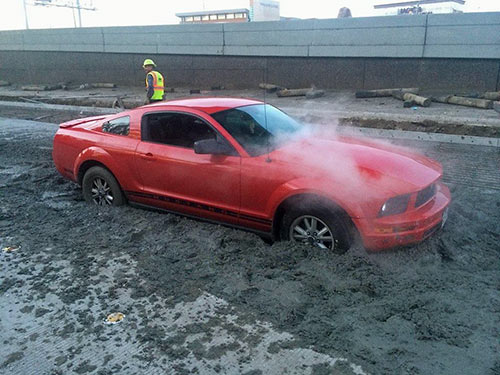
The closest thing Houston has to a Bermuda Triangle — also known as various patches of curing roadway concrete known to appear in and around the intersection of Kirby Dr. and the Southwest Fwy. — claimed its third (known) victim over the weekend. It wasn’t a Lexus this time, or a Jaguar, but a bright red Mustang that found itself solidly rooted in the recently poured stew on the westbound feeder road between Greenbriar and Kirby Dr. early Saturday morning.
COMMENT OF THE DAY: HE WENT THERE 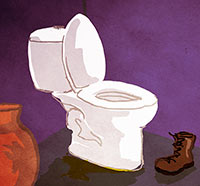 “Careful where you place those toilets during construction. I uprooted one and moved it to temporary storage in the corner of a back room. At Christmas, my visiting father-in-law came up to me and said, ‘Hey — that toilet doesn’t flush — something’s wrong with it.’†[Superdave, commenting on Wallis Home Listing Photo of the Day: Watch Your Back] Illustration: Lulu
“Careful where you place those toilets during construction. I uprooted one and moved it to temporary storage in the corner of a back room. At Christmas, my visiting father-in-law came up to me and said, ‘Hey — that toilet doesn’t flush — something’s wrong with it.’†[Superdave, commenting on Wallis Home Listing Photo of the Day: Watch Your Back] Illustration: Lulu
COMMENT OF THE DAY: A STRUCTURAL ENGINEER EXPLAINS PARKING GARAGE COLLAPSES  “. . . Structural design is generally done by computing an anticipated load (how much will the stuff in the building weigh?), multiplying that by a safety factor, and then designing a structure with enough strength to support that “factored†load. Modern building codes also estimate the anticipated strength as less than it actually is too (for errors in materials/construction). Structures generally end up with at least 3 times as much strength as they need. That said, parking structures typically have the lowest factor of safety built into their design. They fail much more often than other building types because a) they’re so cheaply constructed, b) the loading is so much lighter than other types of structures that factoring doesn’t increase the loading by as many tons, and c) failure rarely results in loss of life.
@TL: You mentioned that there was a loud creek and then it failed? Any guess how long that creak lasted? 5 seconds, 3 minutes, an hour? I ask because concrete structures like this (ESPECIALLY pre-stressed concrete structures) are designed so that IF they fail, the rebar in them is the last thing to go, which will stretch and stretch and stretch gradually so that people have a chance to GTFO. The alternative is what’s called a brittle failure, where there’s just one loud pop and then bam; no warning at all.
. . . Engineers always talk about this stuff in terms of ‘strain’ and ‘yield.’ Strain is how much a material can deform (stretch or compress). When the strain gets too much, the structure ‘yields’ or permanently deforms. For a concrete structure, deform === collapse. The last thing to go before a concrete structure collapses is the reinforcing steel, which has a maximum strain of about 0.02 (2%) before yielding. That means if the clear span (beam-to-beam distance) is 30 feet, you can have a sag of 30 ft / 2 * 0.02 = 3.6 inches before it actually damages the structure. Parking garage widths are typically 64 feet, which can have ~7.5 inches of sag in the middle.” [Ornlu, commenting on A Top-Down View of Last Night’s Parking Garage Collapse at One Riverway] Illustration: Lulu
“. . . Structural design is generally done by computing an anticipated load (how much will the stuff in the building weigh?), multiplying that by a safety factor, and then designing a structure with enough strength to support that “factored†load. Modern building codes also estimate the anticipated strength as less than it actually is too (for errors in materials/construction). Structures generally end up with at least 3 times as much strength as they need. That said, parking structures typically have the lowest factor of safety built into their design. They fail much more often than other building types because a) they’re so cheaply constructed, b) the loading is so much lighter than other types of structures that factoring doesn’t increase the loading by as many tons, and c) failure rarely results in loss of life.
@TL: You mentioned that there was a loud creek and then it failed? Any guess how long that creak lasted? 5 seconds, 3 minutes, an hour? I ask because concrete structures like this (ESPECIALLY pre-stressed concrete structures) are designed so that IF they fail, the rebar in them is the last thing to go, which will stretch and stretch and stretch gradually so that people have a chance to GTFO. The alternative is what’s called a brittle failure, where there’s just one loud pop and then bam; no warning at all.
. . . Engineers always talk about this stuff in terms of ‘strain’ and ‘yield.’ Strain is how much a material can deform (stretch or compress). When the strain gets too much, the structure ‘yields’ or permanently deforms. For a concrete structure, deform === collapse. The last thing to go before a concrete structure collapses is the reinforcing steel, which has a maximum strain of about 0.02 (2%) before yielding. That means if the clear span (beam-to-beam distance) is 30 feet, you can have a sag of 30 ft / 2 * 0.02 = 3.6 inches before it actually damages the structure. Parking garage widths are typically 64 feet, which can have ~7.5 inches of sag in the middle.” [Ornlu, commenting on A Top-Down View of Last Night’s Parking Garage Collapse at One Riverway] Illustration: Lulu
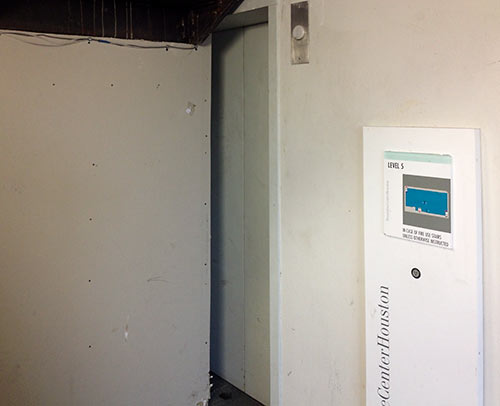
“The doors do actually open on that floor and the elevator is functional,” insists the Swamplot reader who sent us these photos of the elevator landing on the fifth floor of the attached parking garage for the Decorative Center Houston at 5120 Woodway Dr. north of the Galleria. Yes, getting in and out would likely be a little difficult for those wider of girth or packages. But if you do end up stuck, you can always go down to a lower floor, switch cars, and come back up where there’s a little more space to maneuver:

